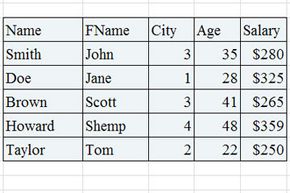Databases have been a staple of business computing from the very beginning of the digital era. In fact, the relational database was born in 1970 when E.F. Codd, a researcher at IBM, wrote a paper outlining the process. Since then, relational databases have grown in popularity to become the standard.
Originally, databases were flat. This means that the information was stored in one long text file, called a tab delimited file. Each entry in the tab delimited file is separated by a special character, such as a vertical bar (|). Each entry contains multiple pieces of information (fields) about a particular object or person grouped together as a record. The text file makes it difficult to search for specific information or to create reports that include only certain fields from each record. Here's an example of the file created by a flat database:
Lname, FName, Age, Salary|Smith, John, 35, $280|Doe, Jane, 28, $325|Brown, Scott, 41, $265|Howard, Shemp, 48, $359|Taylor, Tom, 22, $250
You can see that you have to search sequentially through the entire file to gather related information, such as age or salary. A relational database allows you to easily find specific information. It also allows you to sort based on any field and generate reports that contain only certain fields from each record. Relational databases use tables to store information. The standard fields and records are represented as columns (fields) and rows (records) in a table.


